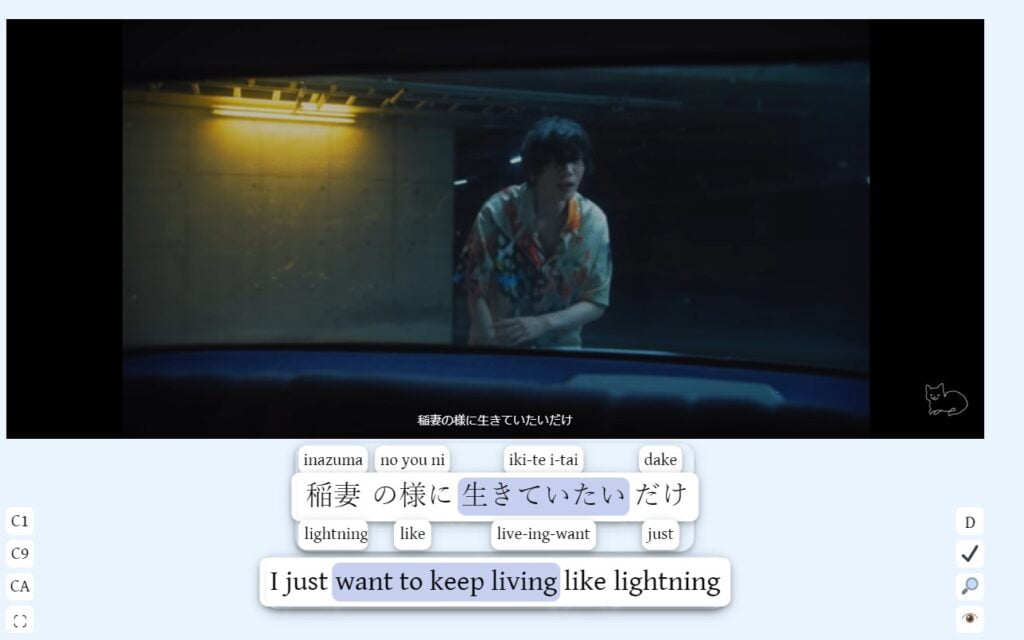How To Study With Japanese Songs?
Do you sometimes get tired of studying by textbook? Why not try supplementing your studies by introducing some additional Japanese learning by using Japanese songs?
Incorporating Japanese music in to your studies not only makes studying more fun but can help with multiple aspects of language acquisition by improving listening and speaking skills.
How Listening To Japanese Music Can Help Improve Your Listening
Listening songs over and over is automatically drilling Japanese pronunciations, common expression and useful vocabulary in Japanese by nature. This is much fun way to learn Japanese rather than studying JLPT listening comprehension.
And It’s Not Just Listening, But It Can Improve Your Speaking Too!
Music can help your speaking and pronunciation skills by singing along with the music or shadowing. Shadowing is one of the powerful ways to study languages.
Many multilinguals learners use music as a study aid as it requires you to read, listen and speak (sing) at the same time to stimulate the brain. Music in particular can help you with linguistic techniques that textbooks cannot, as you can learn Japanese using rhythm to guide you.
Before you pick a song to help you learn, you need to be careful 3 things.
- For beginners, pick songs with a slow tempo so that you can pick up Japanese words
- Pick songs that are clearly pronounced.
- Pick songs that don’t have too many fancy lyrics that might confuse you
Some Pitfalls When Listening To Japanese Music:
Learning while listening to music is pretty much a net positive, but there are a few things to be aware of!
Aishiteru (I love you)
There are many instances of 愛してる in Japanese songs which means “I love you”, but we rarely use “Aishiteru” in daily life. It sounds odd to English speakers but there is a cultural reason behind it. In Japan virtue related to being humble and holding back on expressing your own feelings. We treat the word “Aishiteru” discreetly, for example we only say it out loud when you propose to someone or the person you love is about to die. Instead of saying your feelings clearly, we tend to express from our behavior and sense how other people feel. Although we tend to use lots of “Aishiteru” in J-pop songs.
Gendered speech (baka mitai)
It may not be obvious Ryugagotoku song “bakamitai” lyrics are pretty feminine. This is a good song for learning Japanese grammar and to look up vocabulary. Some language schools use this in class. It is imprtant to pay attention to the fact that despite being sung by male character, these lyrics are probably written from a woman’s point of view, with some examples of feminine speech being present, such as のよor わ, such as Dameyo Dame nanoyo and Zamaa miro seisei suruwa.
Okina furudokei大きな古時計
I would say all native Japanese know this song as it is in a textbooks and is something we often hear on children’s tv when we were little. A Japanese musician called Ken Hirai covered this song and it is slow tempo, lyrics are easy enough to understand for beginner level.
Disney songs Japanese version
Be careful when using Japanese versions of Disney songs as the lyrics are not exactly same as their English counterparts. When they make translated version of Disney songs, they have to consider animation mouth movement and sound. They then transcreate Japanese versions of songs. Therefore, “Let it go” doesn’t mean “Arino-mama” in Japanese, “Arino-mama” means “as I am” or “as it is” or even “be myself” in the context of lyrics. Try to listen any Disney songs that you are familiar to and how much you understand and see the differences between English version and Japanese version.
Axtongue
This is an awesome website to study with.
Japanese music clips from Youtube with Japanese subtitles and English subtitle underneath. While you are listening and watching, the word they sing is highlighted on the English lyrics. The only down side to this resource is that that there are only a few Japanese songs on the list. However, you may discover interesting music you’ve never listened to before in addition to studying.

Japanese Study Spotify Playlist
One of the difficulties when trying to find songs to help in your Japanese study can be that singers can often speak either too fast, or in poetic ways that aren’t much help to beginners! To help with this I’ve put together a few spotify playlists, with clearly pronounced lyrics.
If you play these songs in the Spotify app you’ll be able to read along with the audio, which is a great way to practice your listening and reading skills!
What Is Enka?
Enka is a traditional style of Japanese music that started around 1889. 演歌(Enka) literary means “speech song”, and was often used to criticize the government and for the expansion of freedom and civil rights. We think the first Enka song is “Oppekepe-“. It sounds like Japanese rap.
After 1920, Enka themes changed to focus more on sad feelings or painful affection between a man and a woman, usually featuring words like sake, married couples, tear, sorrowness, north part of Japan, snow, separation etc.
Enka singer Keiko Fuji is Hikaru Utada’s mother and ONE OK ROCK vocalist taka’s parents are both Enka singers Shinichi Mori and Masako Mori.
Although Enka songs are using lots of vibrato that makes difficult to pick up Japanese word, it is worth to know Japanese traditional music culture through songs.
In my lesson when my students are advanced enough, I often use Japanese music for homework to translate and feed back in the lesson. If you are interested in, please contact me.
